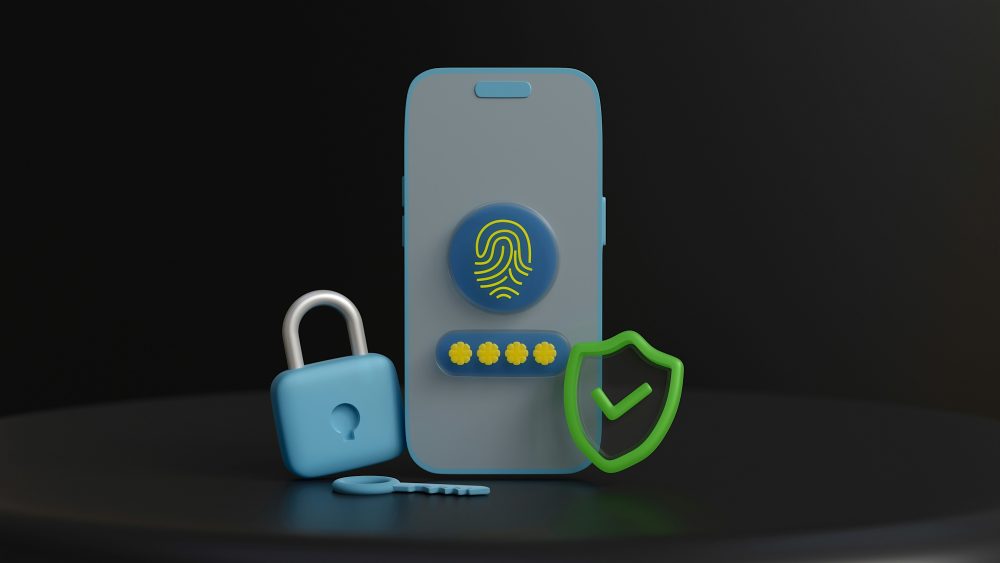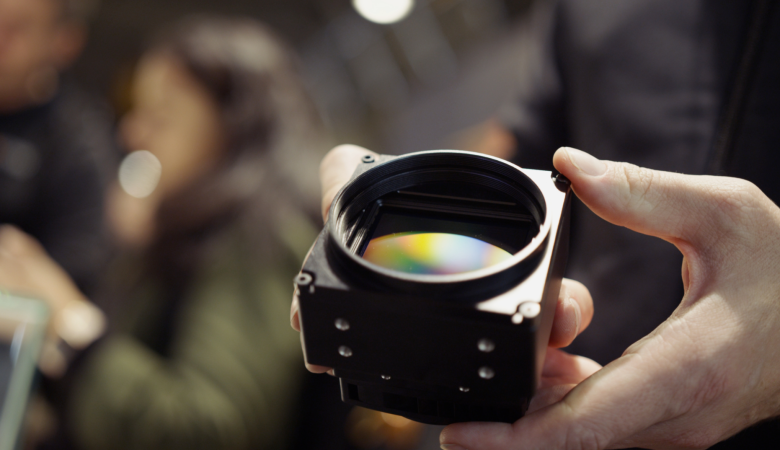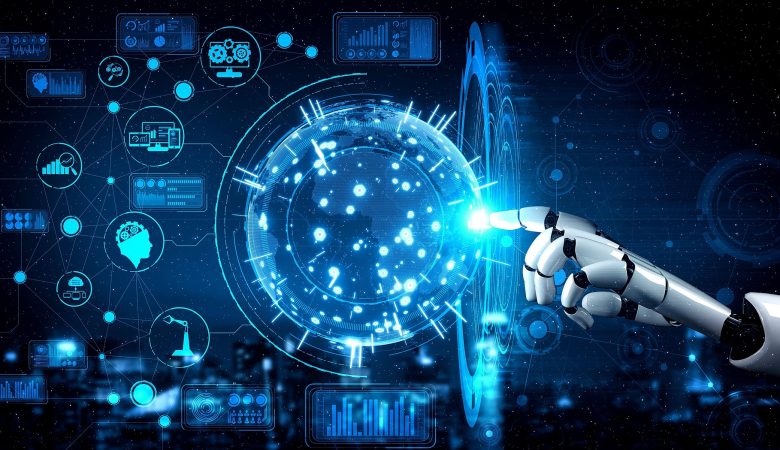Using biometrics technology for banking makes transactions secure and easy. Banks employ fingerprints, facial recognition, and voice patterns. The biometric identifiers replace passwords and PINs. Forgetting access codes is no longer an issue as customers can log in with a touch or glance.
A report states over 1.5 billion mobile banking users will utilize biometric authentication by the year 2024. Another study predicts over 2 billion people will use biometrics for banking by 2025. This is driven by enhanced security and convenience. The global biometric authentication market will reach $59.31 billion by 2025. This shows biometrics’ growing importance, especially in banking.
Integrating biometrics into banking strengthens security and creates an intuitive, efficient customer experience. Let’s explore more about the role of Biometrics in Banking:
Understanding Biometrics and Their Significance
Biometrics rely on people’s unique traits. Like unlocking your phone with a fingerprint or facial scan. In banking, biometrics ensure only you access your account. They check if the person is truly who they claim to be.
Biometrics stand out as they focus on your individual qualities. Unlike guessable passwords or forgettable PINs. Physical traits – fingerprints, iris patterns, facial features, voice – are hard for others to replicate precisely. This makes biometrics a robust identity verification tool.
Biometrics’ importance lies in security and simplicity. They minimize unauthorized account access risks. Acting as high-tech guards that intimately recognize you. They also streamline access, potentially replacing numerous passwords and PINs with a selfie or voice command.
Making Banking Security Better
Banks used to rely on things like passwords, PINs, and those questions they ask you to prove you’re really you. Like your first pet’s name or street you grew up on. But those old ways were not as safe as we thought. People could guess passwords or find answers to those questions. That is where biometrics comes in. It changes the game.
Biometrics means using parts of your body, like fingerprint or face shape, to prove it is you. It is like a secret handshake with your bank. A very personal one. This is a big shift from the old methods.
Why this change? To make things safer and easier for you. Instead of remembering passwords or question answers, you use something always with you – your finger or face. It is hard to steal or copy these unique parts. So it keeps your bank account much more secure.
This does not mean passwords and PINs are gone right away. But banks are moving towards something better. With biometrics, accessing your account is quicker and simpler, without sacrificing safety. It benefits everyone involved.
So, we see a big shift in how banks secure our accounts. Moving from old measures to biometrics makes banking more secure and less hassle. It is an exciting time. All about improving your banking experience.
Making Banking Easy with Biometrics
Biometrics act like a magic key. It helps make banking services easier and faster for people. When banks use things like fingerprints or face to identify you, no need for passwords or PINs. This is good as you can quickly access your bank account, check balance or pay bills. No need to struggle remembering passwords.
Imagine going to an ATM. Instead of entering a PIN, you scan your fingerprint or face or log into a mobile banking app. Instead of typing a password, you do a facial scan. This is not just about speed, but also making you feel relaxed and safe while handling money.
This easy access does not mean less security. Biometrics like fingerprints or facial structure are unique to you. So it is a very secure way to protect your account. This mix of quick access and tight security improves the banking experience.
It also reduces fraud and identity theft risks. Only you have your unique biometrics. It’s harder for someone to pretend to be you. You can worry less and enjoy smoother banking. As more banks use biometrics, banking is becoming safer, more convenient and pleasant for all.
Different Biometric Methods Used by Banks
Banks use biometrics to secure your money. Biometrics verify who you are by using unique parts of your body. Here are some types banks use.
- Fingerprint scans are very common. Your fingerprints are unique, so banks use them to identify customers. It’s like unlocking your phone, but for your bank account.
- Iris scanning is futuristic tech. Your iris (colored eye part) has a special pattern only you have. Banks use iris scanners to recognize you.
- Facial recognition analyzes facial features. It’s quick – just look at a camera. It matches your face to confirm it’s you.
- Voice authentication uses your voiceprint (unique voice). This lets the bank identify you over calls or apps. Everyone’s voice is different, so it can verify you.
Each method uses something unique to you – fingerprint, iris, face, or voice. This stops imposters from accessing your account. Banks use biometrics so only you can access your money.
The Impact of Biometrics on Banking Security
Banks now protect money using biometrics. In the past, someone might guess passwords or answers. But, these days banks hire a top mobile app development company in Dallas, and add biometrics features in apps that use personal traits like fingerprints, faces, or voices. It’s like a special handshake only you share with the bank. This new method is more secure.
It’s tough to mimic unique traits like irises or voices. These stay the same for you. It’s like a key that fits just you, not others. So chances of unauthorized access drop. Biometrics also reduce mistakes. Using fingerprints removes typos. This level of accuracy strengthens account security. By identifying individuals, biometrics let banks safeguard money. It smartly uses tech to protect assets. As biometrics improve, banking will be safer and easier.
Case Studies: Successful Biometric Implementations in Banks
Let’s look at real cases where banks used biometrics. They made banking safer and easier.
- Barclays, a big bank, brought voice recognition for phone banking. Customers could speak. The system knew their voice to allow access to accounts. It sped up the process. It also added more security.
- HSBC, another big bank, used facial recognition in its mobile app. Customers could log in by showing their face to their phone’s camera. It removed the need to remember passwords. It made login quicker and more secure.
- In India, Axis Bank launched biometric authentication using Aadhaar, India’s biometric ID system. Customers could do transactions at branches with a fingerprint or iris scan. It made banking more accessible, especially for those struggling with PINs or passwords.
These examples show biometrics are real in banking now. By adopting these, banks enhance security. They offer smoother, personalized experiences. These cases show biometrics can transform banking, making it more secure, efficient, and user-friendly.
Challenges and Considerations in Adopting Biometrics
Biometric adoption in banks brings new security and ease. But it has hurdles, concerns to ponder.
- Privacy worries arise, as banks log our physical data – fingerprints, facial patterns. Ensuring this info is safeguarded and ethically used is critical.
- Security risks pose another challenge. While biometrics are hard to dupe, no system is flawless. Hackers may find ways to replicate or bypass them. So banks must stay ahead, continuously upgrading security to protect customers.
- Accessibility is another factor. Not everyone can use biometrics uniformly. Manual workers may have worn fingerprints, hindering scanner use. Facial recognition may not always identify correctly, affecting some users. Banks must ensure systems work seamlessly for all.
- Furthermore, implementing biometric tech is costly and complex. Banks need to assess costs, ensure readiness for these new tools. Training staff and customers on biometric usage takes effort.
Despite hurdles, biometrics in banking are exciting. It’s about striking the right balance – leveraging new tech for convenience, while robustly protecting personal data and security.
Conclusion
To sum it all up, exploring biometrics in banking reveals a promising future. It opens doors to tailoring banking for each user. Banks are hiring an app development firms, to add biometrics features in their app, so that their users don’t need passwords or security questions anymore. Their unique traits unlock financial access. This transition isn’t just about added security. It transforms how people bank.





